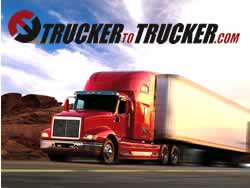If you have a love for the open road but don’t mind working long hours in solitary conditions, truck driving may be a good career for you. Entry-level truck driver salaries can vary widely based on a number of factors, such as geographic location covered, the company you work for, mileage and cargo value.
National Salary
Long-haul truck drivers should expect to be paid by the mile, while more local drivers earn an hourly wage. First-year drivers will earn less than their more experienced counterparts, and will likely fall in the lower spectrum of average earnings. According to national 2010 data from the United States Bureau of Labor Statistics, the lowest 10 percent of drivers earn $24,730 annually. The lower 24 percent earn $30,270 annually. The median salary is $37,770, while the top 10 percent of driver earn $57,480.
Geographic Factors
A driver’s route and location also plays a part in determining salary. The BLS cites Alaska and Nevada as the top-paying states for truck drivers, with mean salaries of $48,250 and $46,470, respectively. New Jersey, Massachusetts and New York round out the five top-paying states, with annual mean wages around $43,000. The Chicago-Naperville-Joliet area is the highest-paying metropolitan region, with annual mean wage of $45,400.
Industry
The cargo for which drivers are responsible for hauling influences wages. Certain industries pay more than others. For example, truck drivers for the postal service typically earn the highest, with an annual mean salary of $54,040. The industry with the highest levels of employment — general freight trucking — pays an annual mean salary of $41,100.
Bonus and Advancement
First-year drivers earn on the lower spectrum of hourly wages and may not have a fixed route or schedule in the beginning. Some truck drivers begin by substituting for regular drivers who are out sick or on vacation. As a driver progresses in his career, he has the potential to earn bonuses or more preferable routes and schedules. The longer a driver works with a track record for safety, the more he will likely earn.





 Used trucks once sold by running ads in newspapers and magazines, posting them on a public bulletin board and by word of mouth. Some people still use these methods even though they are not as effective as the Internet. The web has continued to grow attracting more and more people of all age’s everyday. Internet advertising reaches more people than any other media outlet. Online ads allow millions of people worldwide to see the product resulting in more sales and for buyers it allows them to locate better deals. It is a win situation for everyone.
Used trucks once sold by running ads in newspapers and magazines, posting them on a public bulletin board and by word of mouth. Some people still use these methods even though they are not as effective as the Internet. The web has continued to grow attracting more and more people of all age’s everyday. Internet advertising reaches more people than any other media outlet. Online ads allow millions of people worldwide to see the product resulting in more sales and for buyers it allows them to locate better deals. It is a win situation for everyone. Written text is as important as photos. List all the trucks specifications as if you were the buyer. Using this method to list your specifications and features makes it more likely that your listing will be complete. List any special or outstanding features that would attract buyers. If it is possible list the maintenance the truck has received. A detailed maintenance schedule attracts buyers because a well-maintained truck indicates the past owner has taken good care of it leaving less for the buyer to perform. Strong descriptions and pictures increase the click rate by 85 percent.
Written text is as important as photos. List all the trucks specifications as if you were the buyer. Using this method to list your specifications and features makes it more likely that your listing will be complete. List any special or outstanding features that would attract buyers. If it is possible list the maintenance the truck has received. A detailed maintenance schedule attracts buyers because a well-maintained truck indicates the past owner has taken good care of it leaving less for the buyer to perform. Strong descriptions and pictures increase the click rate by 85 percent.



